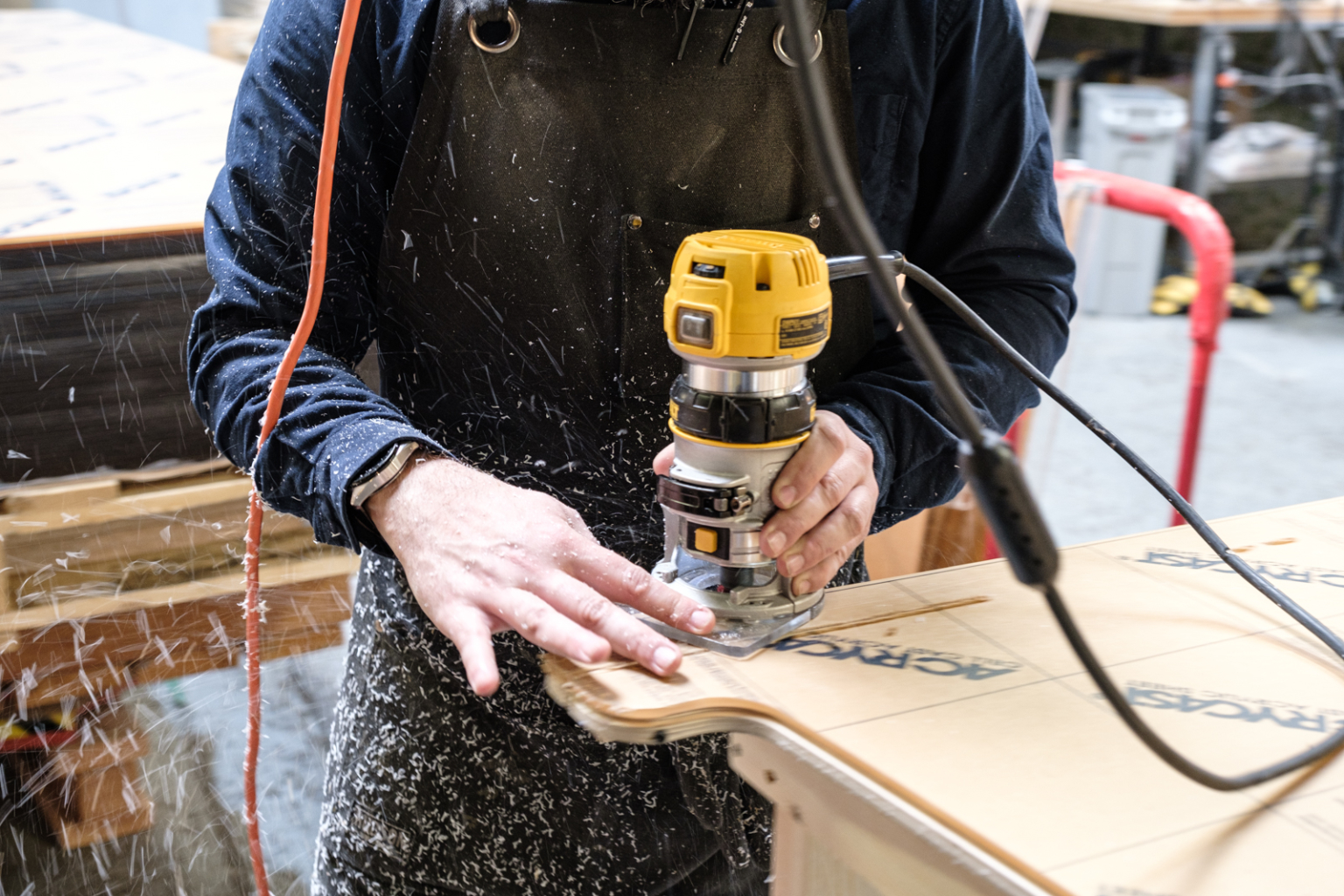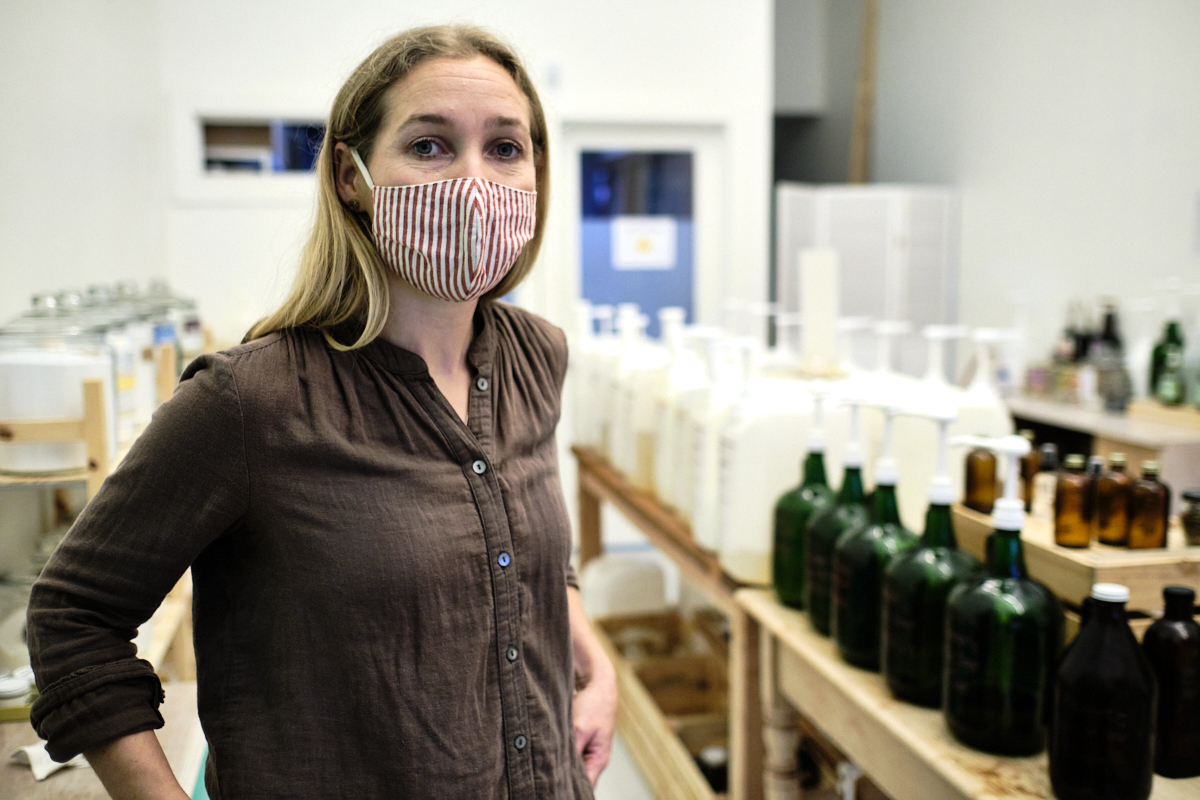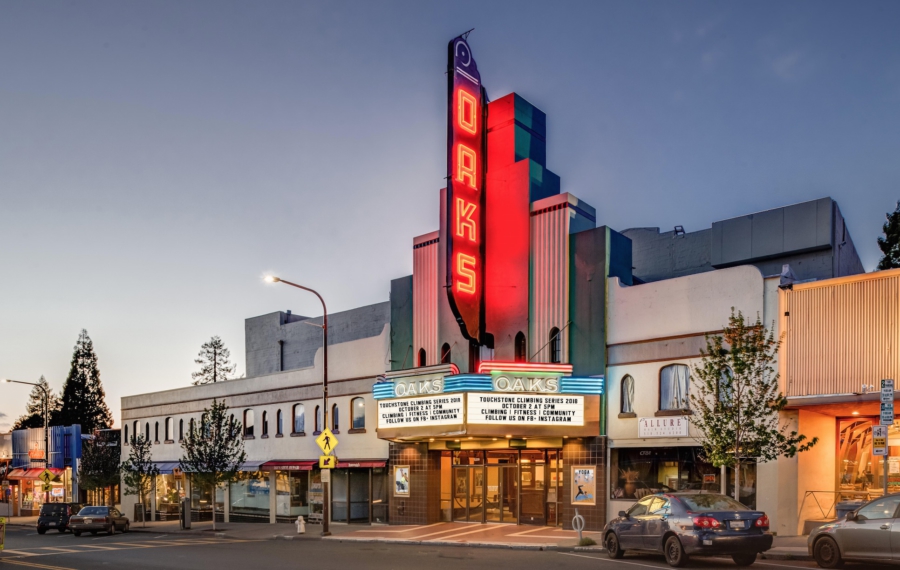Expected to open on Solano Avenue by the end of the year, it will be Berkeley’s fourth climbing gym.
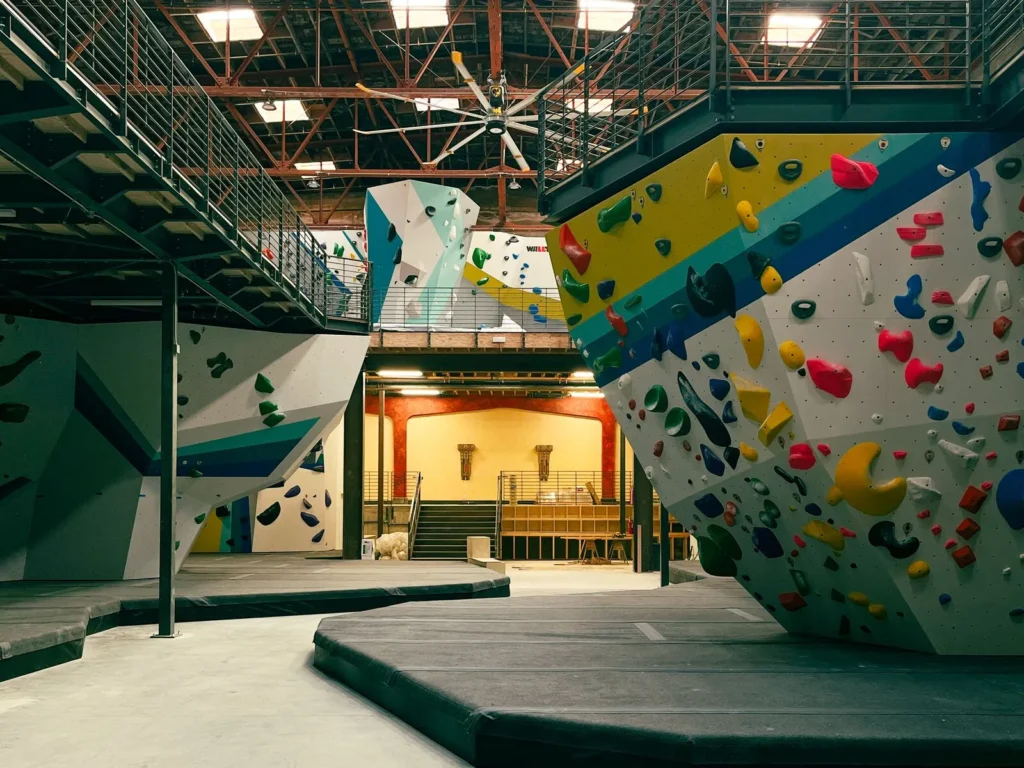
November 21, 2023
BERKELEYSIDE — After sitting dark and vacant since 2011, the highly anticipated Oaks bouldering facility is slated to open by the end of the year as Touchstone Climbing puts the finishing touches on the former movie theater, a neighborhood mainstay on Solano Avenue for the past 98 years.
The conversion of the former 1,438-seat Oaks Theatre into a state-of-the-art climbing gym took four years — slightly longer than anticipated — due to the pandemic.
The Oaks joins two other bouldering facilities in Berkeley, Benchmark Climbing, 1607 Shattuck Ave., and Mosaic Boulders, 2369 Telegraph Ave., both of which opened in 2022, and a top-roping facility, Berkeley Ironworks, which Touchstone opened in a re-envisioned industrial space in 2000.
Local businesses see the new facility as a shot in the arm for Solano Avenue retail, which has been struggling since the pandemic. The October relighting of the theater’s neon marquee was the latest bit of Touchstone news to light up social media. In 2017 when it made its first presentations to the city, Touchstone estimated that the Oaks would draw around 800 visits per day.
For more than a decade, residents feared that they would lose the theater and its distinct architectural profile on Solano Avenue, along with its ability to bring together disparate members of the community and keep the commercial strip vital and lit up at night, benefitting nearby restaurants and coffee shops catering to the theater crowd.
Auny Abaya, whose Jerusalem Kitchen has been at the corner of Solano and The Alameda for the past 24 years, said he lost a good portion of his business when the theater shuttered: “People would come and eat and then go to the movies.”
Now, he’s already seeing an uptick, due to route setters working at the facility. “A lot of people come with their bicycles to go climbing,” he said. He’s looking forward to the official opening.
“It’s certainly highly anticipated,” said Allen Cain, the director of the Solano Avenue Association. “We’ve been excited about the project for several years now. We are thankful that the space is being invested in, that it did not remain a vacancy for too long, and that someone had the will — and financial resources — to create something from it.”
Theater outside; gym inside
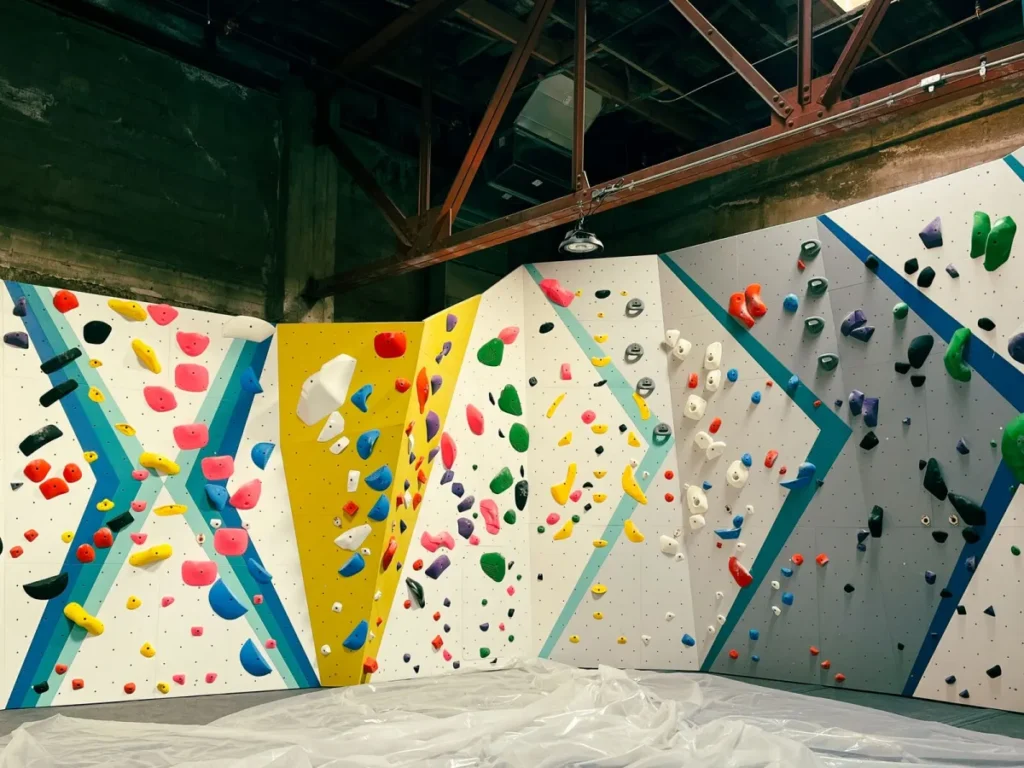
The so-called “adaptive reuse” project, designed with the help of Twelve13 architects in Oakland, allowed the community to get what it wanted at the curb — albeit with another type of use inside.
From the curb, The Oaks retains its nostalgic, main-street appeal as an old-time theater, complete with its neon marquee. The building’s art deco lobby and five retail spaces along Solano Avenue were also retained. The core of the gutted theater, however, has been transformed into a skylit, two-story interior with brightly colored and graphic climbing walls that jut out into the space, bringing together community through sport — the antithesis of sitting in a darkened theater.
Saving old theaters — or just their facades — is nothing new, but the practice has gained more traction in recent years as movie theaters shutter, due mostly to the popularity of streaming services that spiked during the pandemic. In downtown Berkeley, which once boasted half a dozen theaters, three have closed in recent years, leaving the city with only one venue for first-run films, Elmwood’s Rialto Cinemas. (UC Berkeley’s Pacific Film Archive focuses more on art-house, historic and international cinema.)
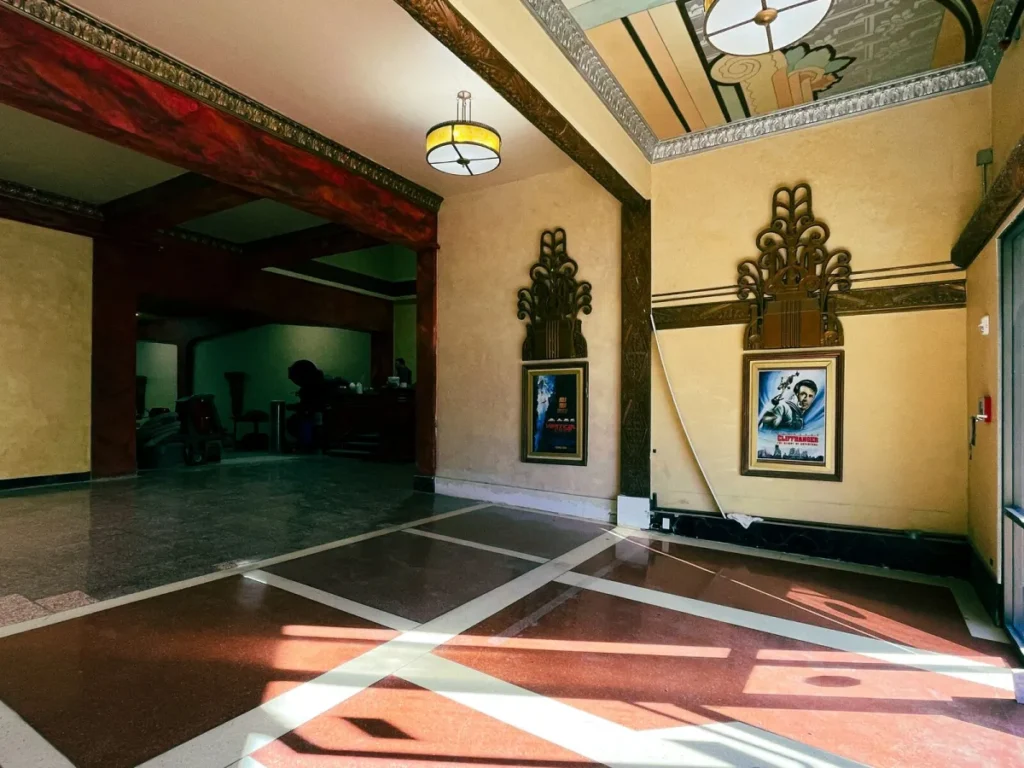
The Oaks is the first project to illustrate the possibility of reusing 100-year-old buildings in new ways. Elsewhere in Berkeley, plans are underway to save at least part of the Regal UA and the Californian theaters’ facades, while making way for hundreds of apartments.
The Oaks is Touchstone’s 16th property in California. Touchstone’s corporate offices are across the street from the Iron Works facility and contain its Team Training Center, Touchstone’s first for youth competitive climbing.
The Oaks is Touchstone’s second theater conversion, following The Studio in San Jose that opened in 2012.
“One of the things that was exciting about working with Touchstone is that they have a history of taking historic properties — old power plants, factories and in this case a movie theater — and really respecting the exterior,” said councilmember Sophie Hahn, who said she helped the company navigate the permitting process, looping in the city’s office of economic development as a resource. “It’s wonderful that we’re bringing something so vibrant and new into a historic structure and melding the old and the new in such a dynamic way.”
A recent tour of The Oaks revealed what’s been lost, preserved and added to the 21,575-square-foot former theater. The architects have designed other Touchstone properties, including Pacific Pipe, which opened in Oakland last year. Touchstone has created its own construction company for its projects.
“We made every effort to maintain the original molding and embellishments,” said Jeffery Bowling, Touchstone’s creative and business development director.
In addition to the marquee outside, most of the former theater’s Art Deco architectural elements can be found in the entry, which contains a cluster of original chandeliers. On one wall, a pair of decorative plaster filigree intended to highlight feature presentations have been preserved, but now display movie posters for “Cliff Hanger” and “Vertical Limit” that were chosen for their climbing themes.
Sections of the elaborate molding that wraps around the entry walls and ceiling and had been damaged or missing were replicated by restorers. The entry will soon include a reception area, where members will check in and be able to buy drinks and grab-and-go snacks.
In the lobby, a decorative painter was brought in to match the faux velvet and marble textures that continue down the hallway and up the main stair hall. The hallway is lined with restored period sconces before making a 90-degree turn, revealing the dramatic 14,000-square-foot space, the gutted former theater, with ceilings more than 40 feet high. Overhead is a giant I-beam to support the ceiling. At the far wall, the two-story proscenium arch is the only theatrical reference that remains.
Instead of a dark theater, the room is now bright, due to its many skylights. “We like to add natural light into these buildings we repurpose,” said Heather Bellgreen, Touchstone’s director of marketing.
To get the most use out of the room’s tremendous height, the architects created two floors of climbing while keeping the interiors open, devoid of interior walls, and connected via open steel stairways and railings. The main floor boasts two parallel climbing walls, each 15 feet high, which jut out into the space in spots. Three climbing walls are on the second floor, but they are shorter (12 feet). In total, there will be 7,000 square feet of climbing terrain.
The second floor also boasts a workout room that will house cardio equipment and weights. Yoga and fitness classes will also be offered, along with amenities like showers, free towel service and a pro shop with climbing gear. Monthly memberships are $95 (after a $100 initiation fee), with day passes at $30.
The facility’s climbing walls were made by Walltopia, a Bulgarian manufacturer Touchstone has worked with for all its facilities. The wall surfaces, made from a texture-coated wood, are shipped to the U.S. and built here by a Bulgarian team.
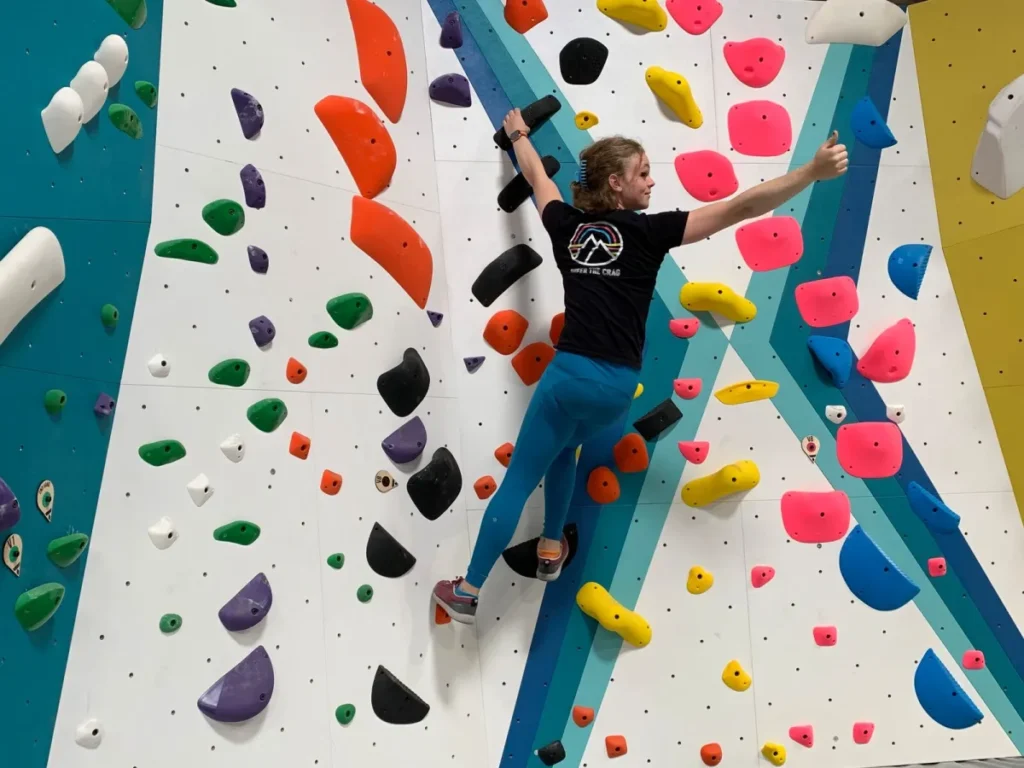
About a foot of padding surrounds all the climbing surfaces in case climbers lose their footing, typical of bouldering gyms, which feature lower walls. Top-roping facilities have taller walls (as high as 45 feet at the Berkeley Ironworks) and involve the use of ropes and protective gear.
In addition to having its own construction company, Touchstone also manufactures its own holds. The climbs themselves were created, climbed and graded by 28 Touchstone route setters, a process called forerunning. “They actually have to climb them to grade them,” said Bellgreen. “There will be hundreds of climbs.”
V0 is the easiest route (say a 12-foot climb with fat, globular-shaped holds), while a V10 is for experts (with taller climbs and smaller and/or more-difficult-to-hold-onto holds).
Many owners and operators
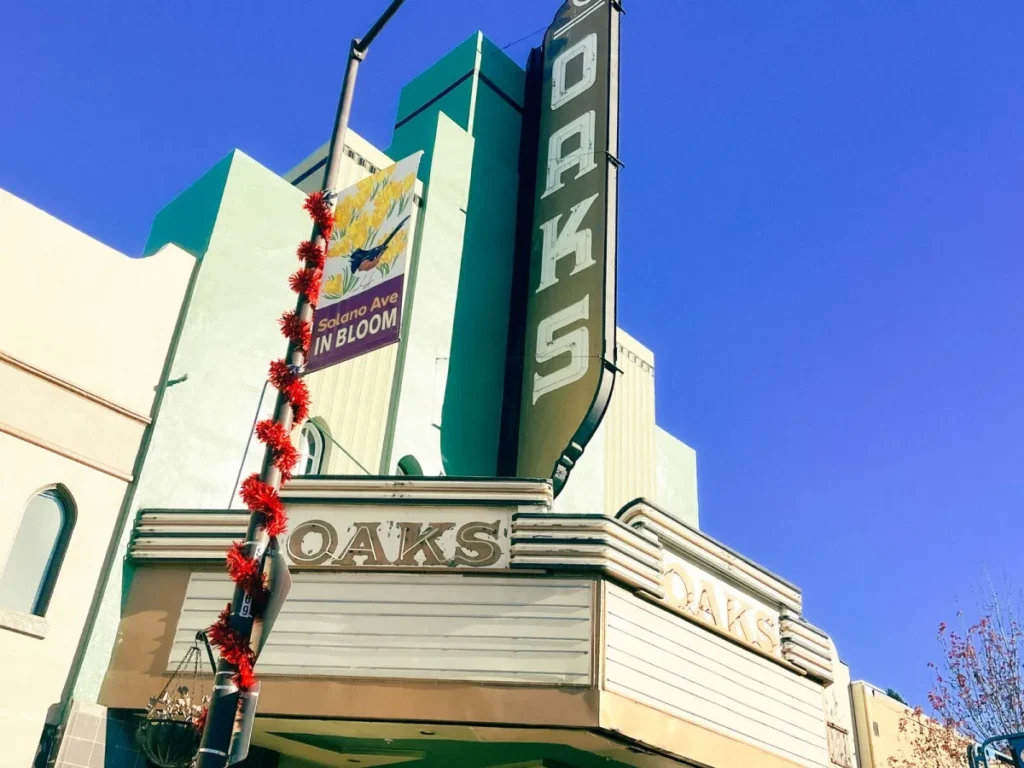
The Oaks has been an architectural anchor on Solano since 1925, when it opened on Sept. 15 showing the film “Steppin’ Out” with Ford Sterling. The architects were the Reid Brothers, who were also behind Oakland’s Grand Lake Theater and San Francisco’s Cliff House and Fairmont Hotel. In 1940, architect William B. David remodeled the theater in streamline modern, an art deco style inspired by aerodynamic design. The theater upgraded to two screens in 1973.
Over its almost century-long history, various owners and operators have come and gone. More recently, the Oaks was operated by the Renaissance Rialto chain, which restored the theater when it took it over in 1994. At some point Allen Michaan, who owns the Grand Lake Theater, operated the Oaks until 2005, when the Metropolitan Theater Corporation took over and operated the theater until 2010.
Merriment Media, an independent operator, screened Bollywood films for several months in 2010 before losing its lease for failing to pay rent. At the time, the theater was owned by John Gordon, the Berkeley commercial real estate agent and developer and one of Berkeley’s largest property owners.
Although some residents and community groups initially wanted the building to be leased as a community performance space, such plans never came to fruition.
“One of the challenges they had was to do the extensive renovation that was required,” Hahn said. “As a small nonprofit it’s very hard to go to the board and ask for money to rehabilitate a facility that you don’t own.”
Gordon ended up putting the property on the market in May 2017 for $4.25 million. Touchstone bought the building for close to the asking price.
The Melvins, the co-founders of Touchstone, met in 1978 while climbing at Indian Rock Park; he was a UC Berkeley student and she had just graduated from California College of the Arts in Oakland. The park has a historic connection to California rock climbing: Its piles of Northbrae rhyolite (Indian Rock, Cragmont Rock and nearby Mortar Rock) became proving grounds for local climbers, who helped open up climbing at parks like Yosemite. Many Sierra Club members also joined the Cragmont Climbing Club, established in 1932 to promote climbing safety.
“We’ve been climbing together ever since” we met, Mark Melvin told Berkeleyside in 2017. They opened their first Landmark climbing gym, Mission Cliffs, in San Francisco in 1995.
Shortly after buying the building in 2017, Melvin described the Oaks location as “awesome,” adding: “Who doesn’t define Solano Avenue without a mention of the Oaks?”

